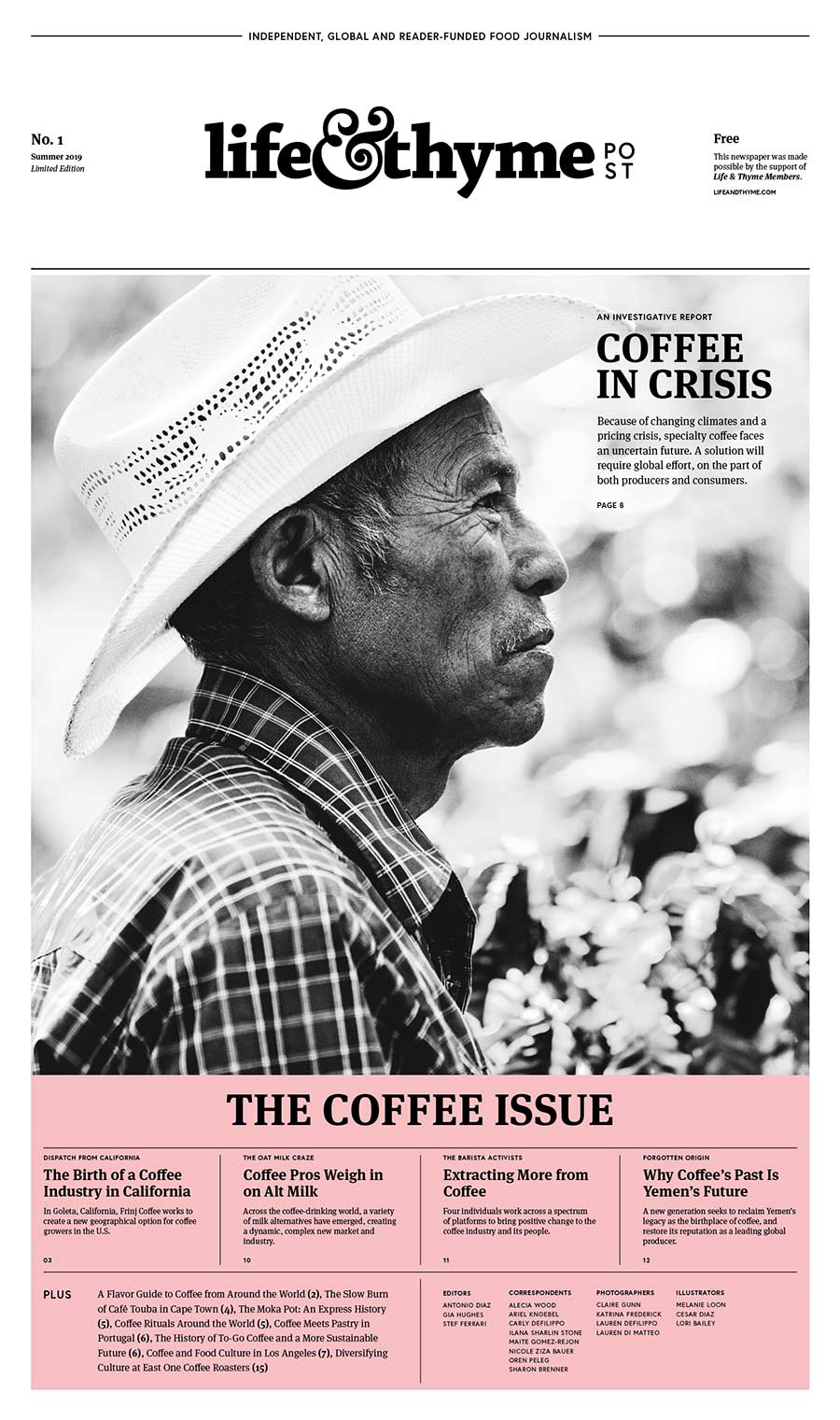
This story can also be found in our inaugural issue of Life & Thyme Post, our limited edition newspaper for Life & Thyme members.
When asked to describe Portuguese cuisine, the average American will find themselves stumped. Even those who have personally visited the country often offer a limited menu: bacalhau, port wine, pastéis de nata, tinned fish. The truth is, for a country whose naval and trading prowess influenced so much of European cuisine—from the import of tea, spices and beyond—the culinary culture of Portugal itself is rarely celebrated outside the country’s own borders.
As for Portuguese coffee culture, one would be forgiven for imagining a hand-me-down smattering of Italy’s espresso culture or France’s leisurely, intellectual cafés. In an effort to dig deeper, we sought the guidance of Maria Sena and Bruno Carvalho, Porto natives and founders of Amass. Cook. These former research scientists bring an analytical approach to their culinary writing and guided tours, diving into not only the what, but also the why behind the region’s unique traditions.
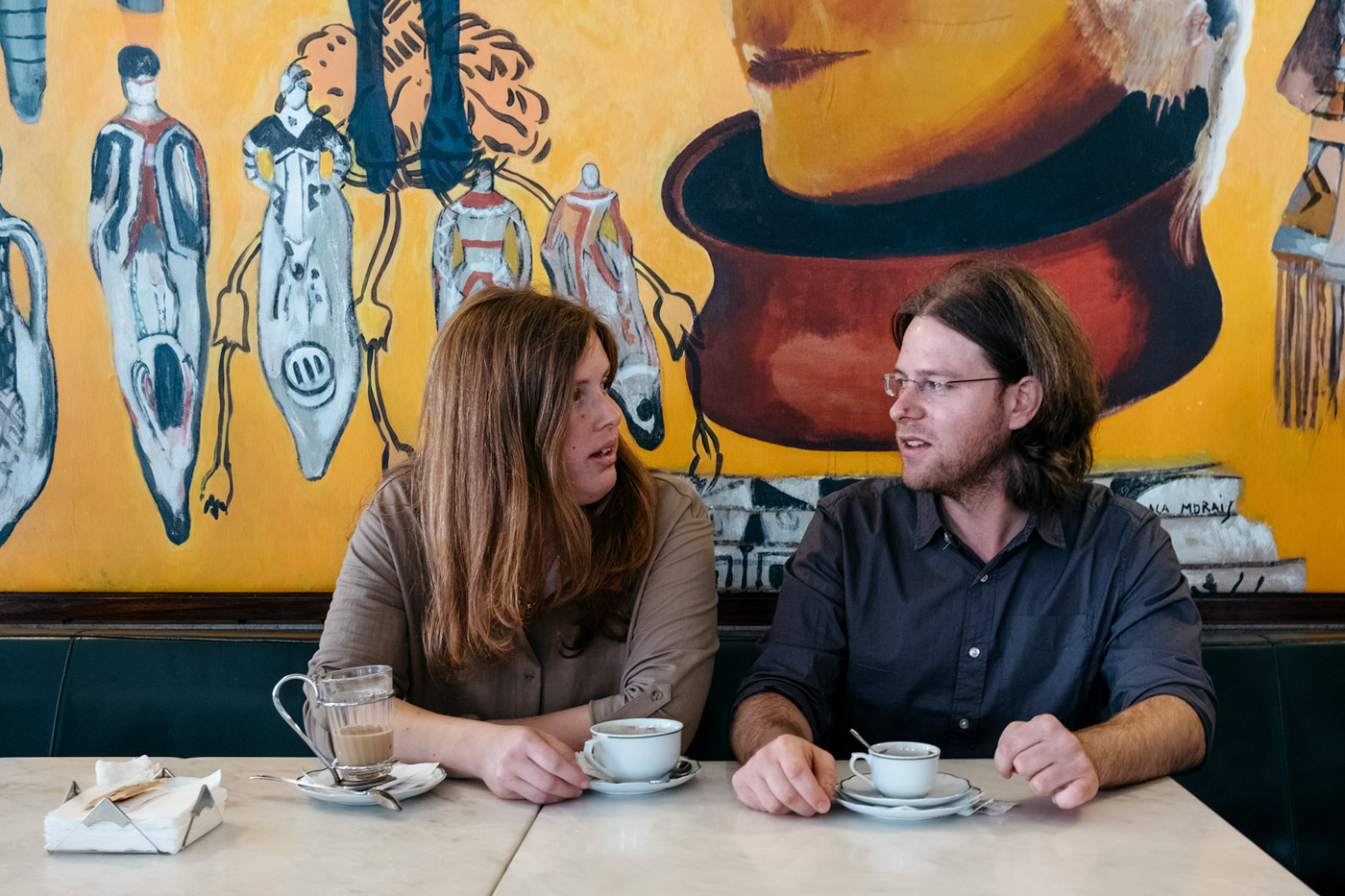
The first thing the pair teaches us is Portugal’s coffee traditions are notably different than those of their European neighbors. “If you order a latte at a traditional café in Portugal, you’re not going to get very far,” Sena laughs. Rather, the country has its own robust menu of coffee offerings, with a unique vocabulary to match. In Porto, an espresso is most often called a cimbalino, otherwise known as a bica in Lisbon. Similarly, the closest thing to a macchiato holds two names: pingo in Porto and garoto in Lisbon. Those who prefer more milk will enjoy a meia de leite, although we recommend a galão—which is a fancier presentation served in a beautiful glass. For a digestif, there’s also the café com cheirinho—espresso with a splash of brandy or other hard liquor. Or if you’re really curious to try something different, you could order a carioca de café, which is a weak coffee brewed with the leftover grounds of someone else’s espresso.
If you’re not confused—or excited—yet, there are still more drinks to try. In fact, one of the most delicious traditional beverages you’ll find is not even coffee; it’s cevada. This darkly roasted barley drink was created for those who struggle with coffee’s acidity; but when brewed like coffee and served with foamed milk, it’s delicious enough to warrant a detour from your caffeine habit. And since it’s not unusual for Portuguese locals to enjoy five or more coffees a day, you might just want to slip some of this naturally-decaf brew into the rotation.
“Bruno’s grandmother drinks cevada every day,” Sena explains. “It’s very traditional for the older population, and can even be mixed with coffee or chicory to create blends with less caffeination or more bitterness.” In fact, Sena notes most Portuguese will prefer these alternative blends to decaf coffee, which is not generally considered to be a quality product.
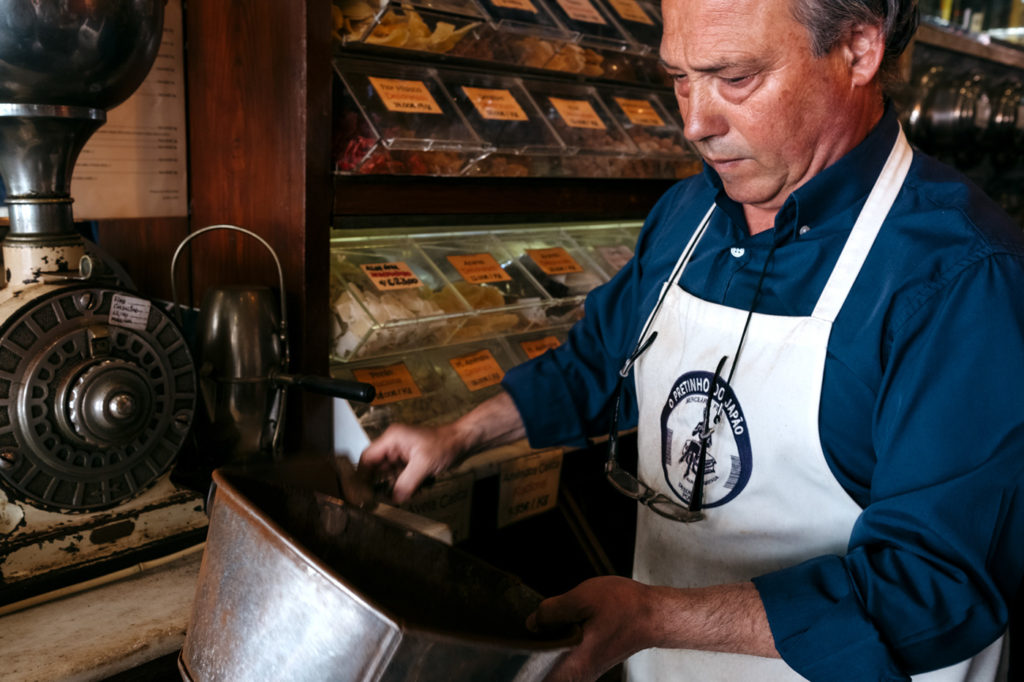
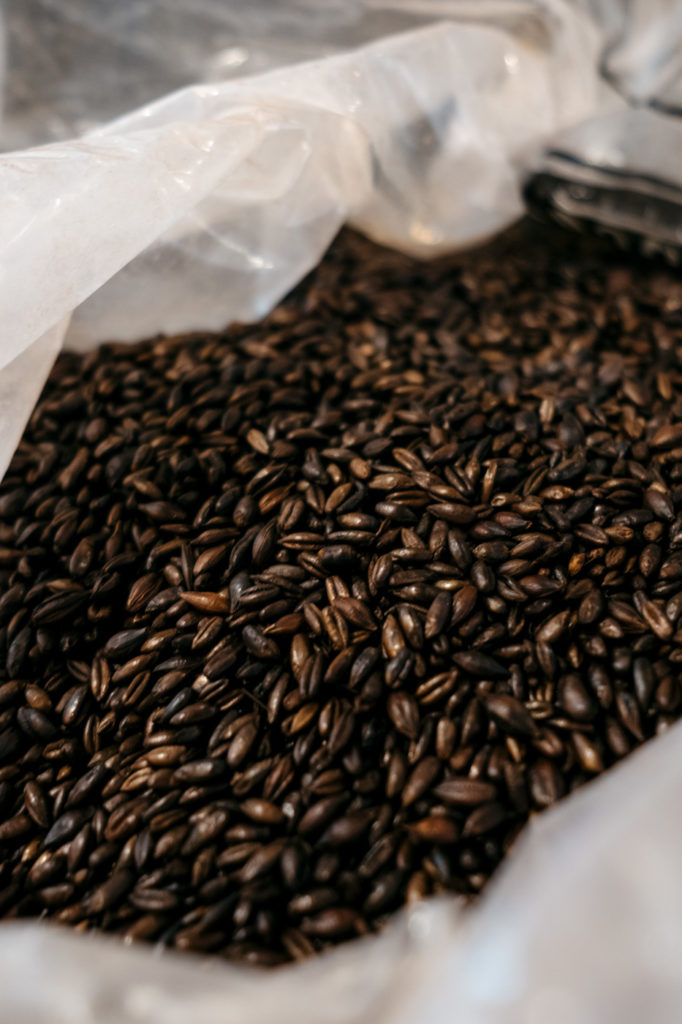
Custom blends have long been a part of Portuguese coffee tradition. “You can still find specialty grocery stores in Porto where our grandparents’ generation would have bought their coffee,” Sena notes. “And they would know how they liked their blend, whether seventy percent robusta and thirty percent arabica or some other proportion.” Sena introduces us to one of these shops—and its resident coffee expert, José Manel—for a firsthand taste of this history. At O Pretinho do Japão, customers can peruse a wide range of globally imported beans and consult with Manel on their preferred brewing style and flavor notes. Once a recipe is agreed upon, Manel uses an early twentieth century grinder that transfers the grounds into the top drawer of a wooden filing cabinet. The entire process feels both time-worn and effective, filling the shop with rich aromas.
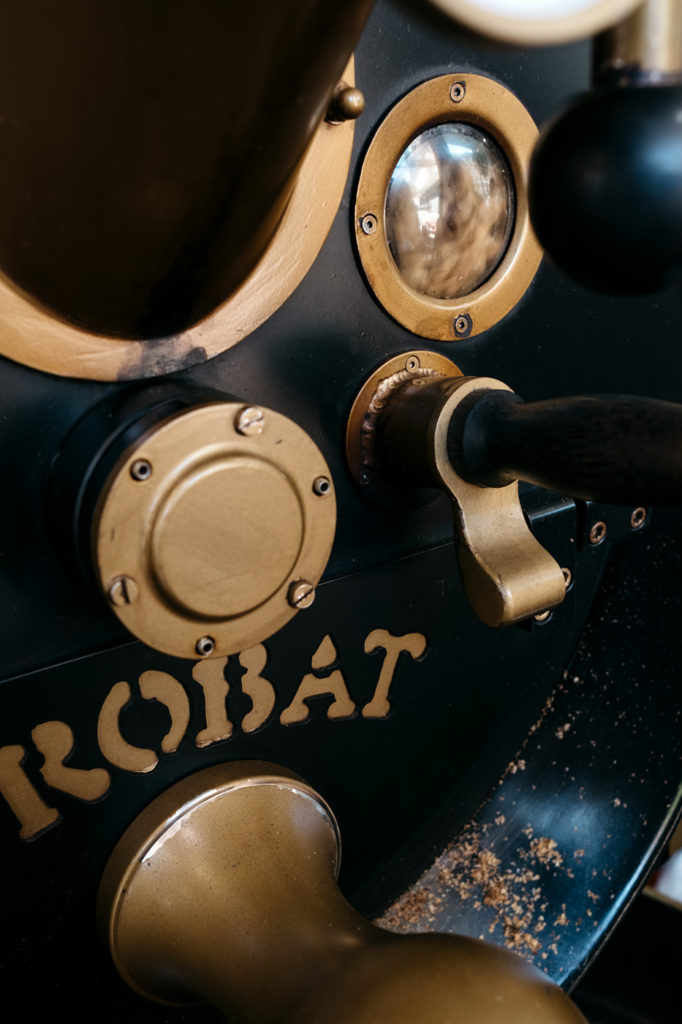

When it comes to selecting quality beans, Sena notes, “In Portugal, the crema is incredibly important. If the beans aren’t properly cooled during the roasting process, you won’t have the correct proportions of water and carbon dioxide to create that foam.” On select days at Sanzala—a historic roaster in the Baixa district of Porto—you can witness that precision roasting technique firsthand, as their team carefully listens and watches to ensure green beans of various sizes and origins darken to a consistently toasted mahogany brown. There, you’ll also notice that robusta is preferred over the light arabica roasts that dominate current third wave trends. Darker, nuttier and less acidic, robusta also boasts a higher caffeine content, actually powering the country’s workforce.
“We don’t take a siesta here,” Sena emphasizes. “Porto, in particular, is known for the local work ethic. There is an expression many locals will use: ‘Braga prays. Coimbra studies. Lisbon parties. And Porto works.’” If Portugal’s “second city” is indeed the hardest working, that might help explain its robust café history. One of the country’s first café chains, A Brasileira, was founded in Porto by a Brazil-based coffee importer Adrian Telles. In order to better market his product, he sought to develop a culture of coffee consumption outside the home. The brand eventually became a franchise, and you can also visit its most famous sister café in Lisbon’s Chiado neighborhood.
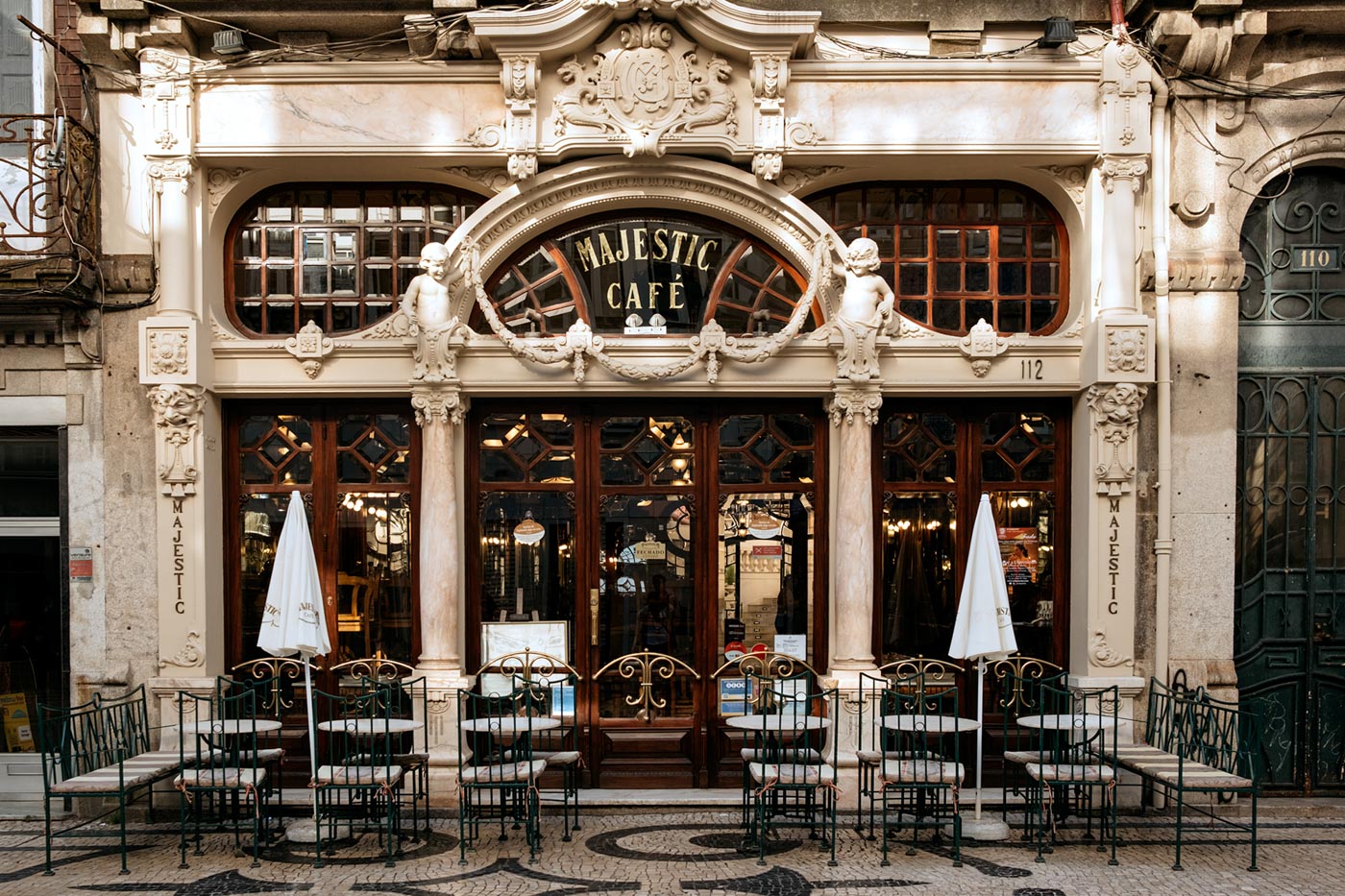
Beyond “Brasileira,” as the locals call it, The Majestic Café (opened as The Elite in 1921) on the bustling Rua de Santa Catarina boasts a lavish Belle Epoque interior, as well as a reputation for sparking conversation and debate among the intellectuals and elites of its time. And while many other noteworthy cafés have, unfortunately, closed down, recent policies offsetting rent hikes are helping historic businesses retain their original location.

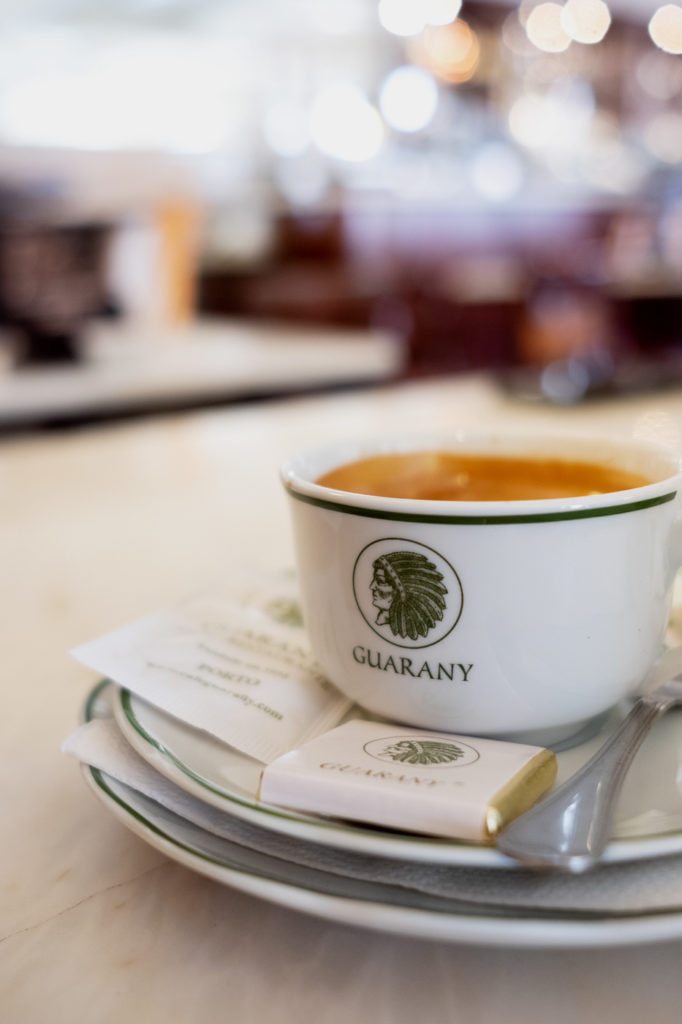
Among the beneficiaries of these new policies is Café Guarany, founded in 1933. Less ornate than other cafés of its era, the decor feels more approachable for everyday caffeination. The dark green booths and metal chairs are offset by large, vibrant murals depicting the native tribes of South Brazil—the largest coffee producing nation in the café’s heyday. “The Guarany tends to get overlooked, but it’s such an excellent example of our café culture,” Sena explains. And, indeed, the coffee measures up. From their elegant galão to the best cevada we taste our entire trip, each drink is more satisfying than the next.
Of course, Portugal isn’t frozen in history, and the caffeine scene continues to evolve, with local roasters and modern shops channeling global coffee trends. In Porto and nearby Gaia, Combi Coffee and 7g Roaster lead the charge for Portugal’s emerging third wave, offering a more globalized vocabulary of beverages and single-origin blends. In Lisbon, Fábrica Coffee Roasters sets the bar for modern shops, offering beat-the-heat drinks that include fizzy cold brew lemonade or espresso tonic. And beyond Portuguese-owned businesses, an emerging scene of expat-owned cafés—like Birds of Passage in Porto, Copenhagen Coffee Lab in Lisbon, or Goldig in Lagos—offer influences from such far flung locales as Australia, Switzerland and Uruguay.

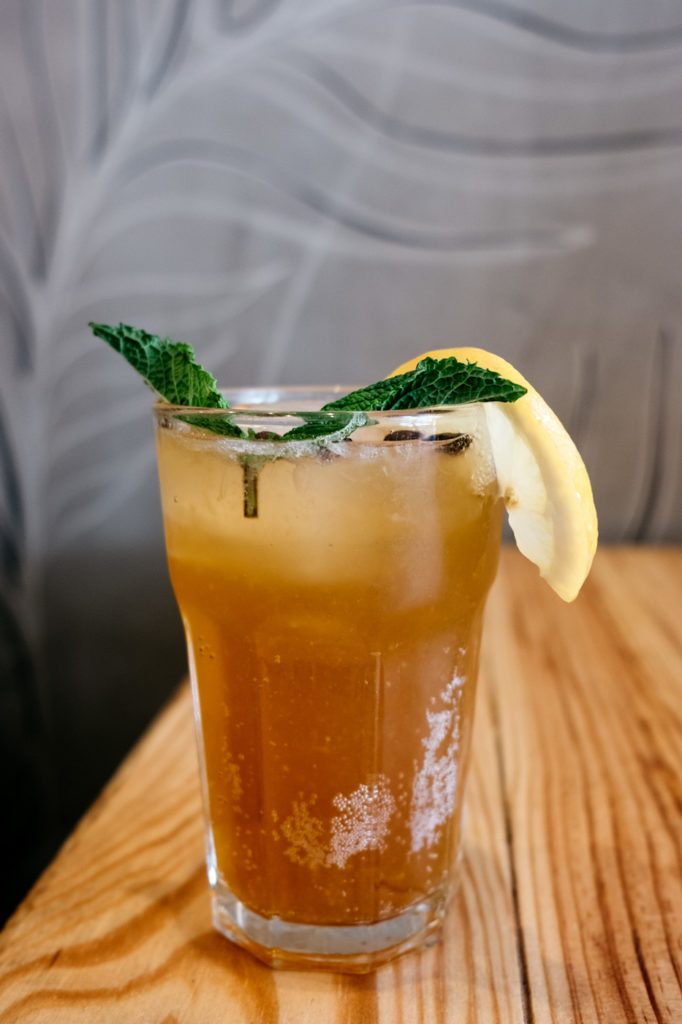
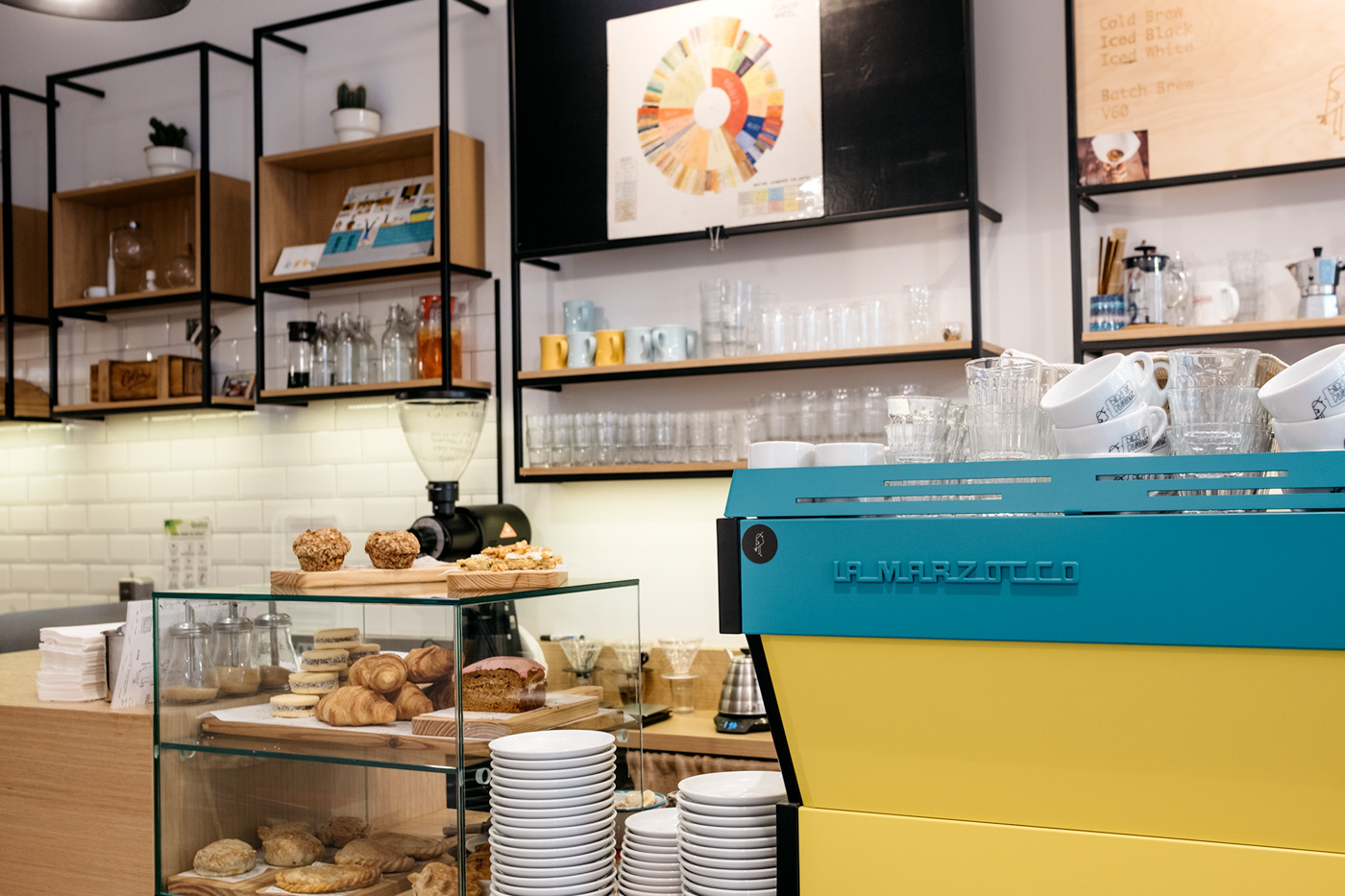
Yet to truly enjoy coffee like the Portuguese, you’ll have to look beyond the cup. The country boasts an incredible array of pastries that locals pair with their morning, afternoon and evening cup of joe. Sena explains, “Most of these sweets were created, perfected and sold by the monasteries and convents of the country, which guarded their recipes very carefully. But in 1834, when the monasteries were dissolved by royal decree, there was a rush to share these culinary secrets with the public.” Those regional sweets remain a source of considerable pride, from Aveiro’s communion wafer and egg custard ovos moles, to Porto’s layered puff-pastry jesuitas and Lisbon’s omnipresent pastéis de nata.
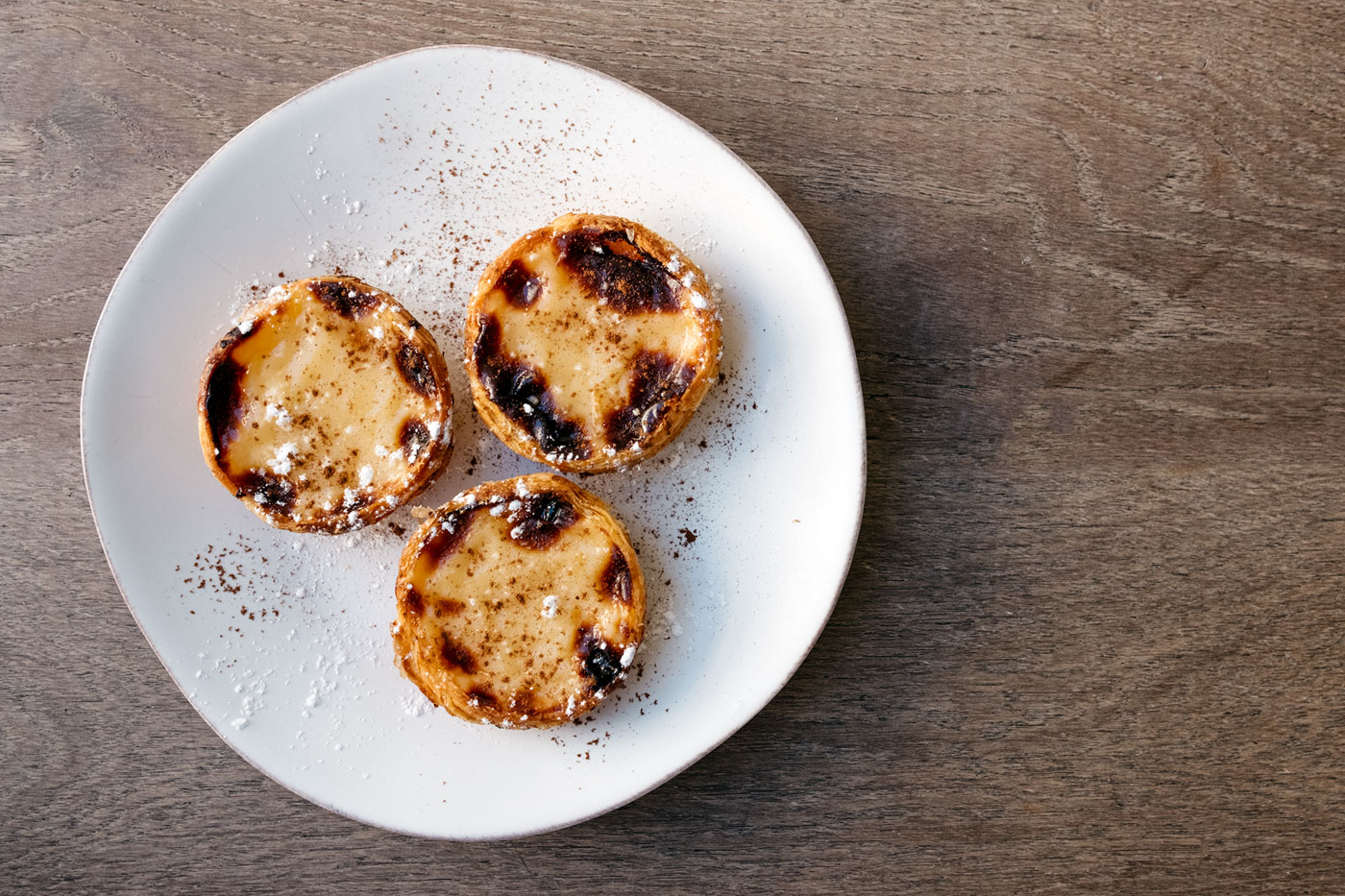
Many shops specialize in one or two pastries, but the truly old-school experience is to visit a confeitaria. These long, narrow bakeries sell a wide range of breads, pastries and a smattering of other gourmet groceries, making them a perfect place to shop for picnic needs. Yet beyond the queue of pastry buyers, you’ll often find small cafés that double as the best people watching spots in Portugal. At Porto’s beloved Confeitaria do Bolhão, for example, old friends rub elbows with new acquaintances, huddling around small café tables strewn with espressos and pastries of all shapes and sizes. A corner of culture impervious to the rising tide of tourism, it’s a perfect snapshot of daily life.





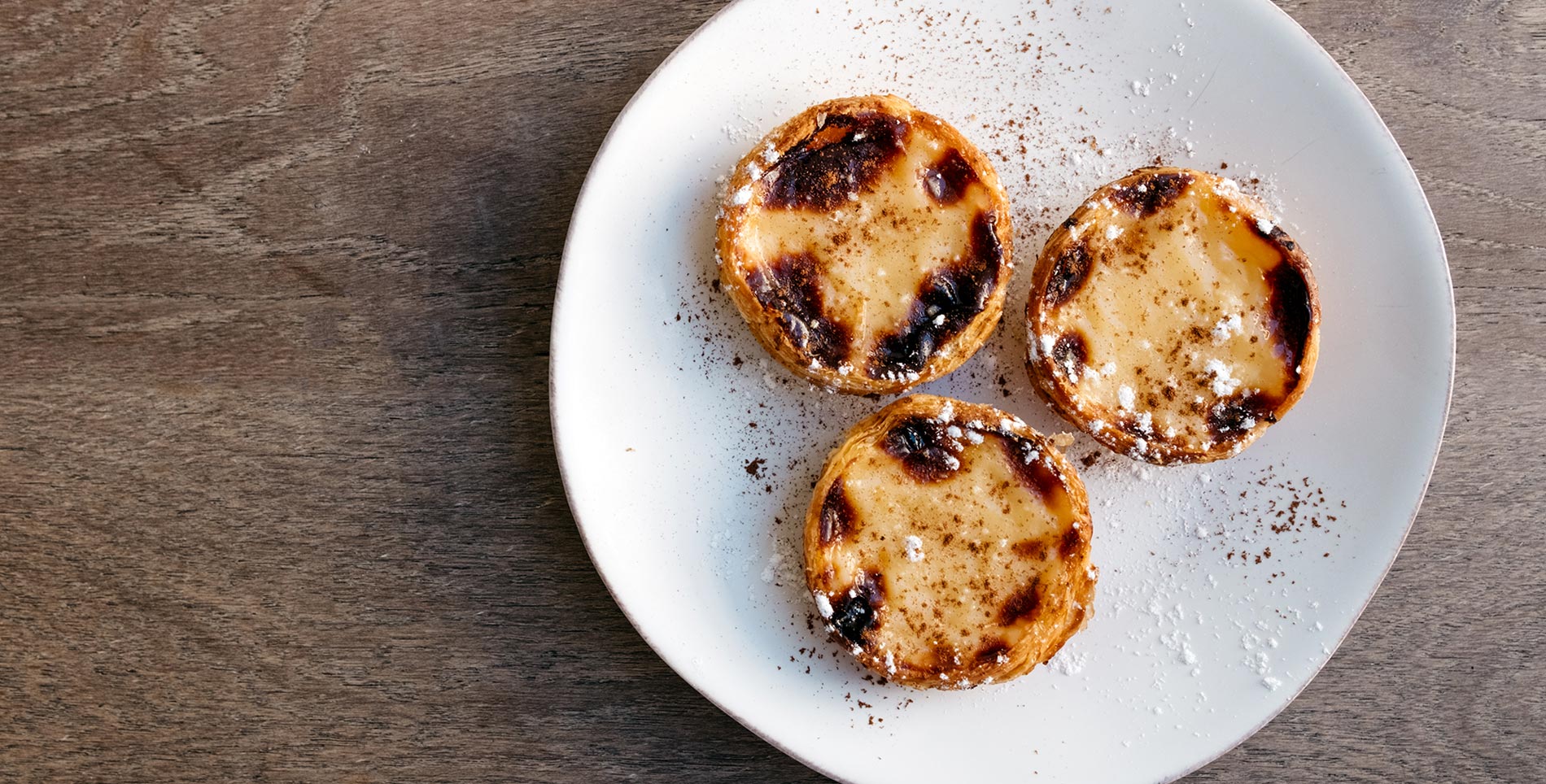

Our comments section is for members only.
Join today to gain exclusive access.